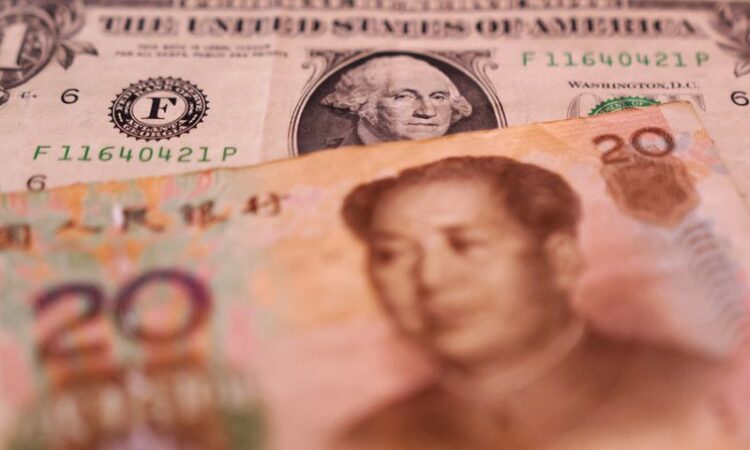
By Vuyani Ndaba
JOHANNESBURG (Reuters) – Emerging market currencies are expected to drift higher in coming months thanks to improved global growth prospects, boosted in part by the reopening of China’s economy, a Reuters poll of 40 foreign exchange strategists found.
After a good start to the year for emerging market forex, the U.S. dollar has gained over the past two trading sessions after unexpectedly strong jobs data for January reduced market expectations for a Federal Reserve rate cut later this year.
So long as U.S. inflation keeps drifting lower, however, strategists forecast emerging market currencies will perform better than majors, although not in a straight line upward in the near term.
“Assuming again that (U.S.) inflation stays moderate and China continues to expand, a potential acceleration of U.S./global growth can lift risk sentiment, benefiting EMFX,” wrote Themistoklis Fiotakis, head of FX research at Barclays.
The February survey of currency strategists showed broad gains are expected over the next three months for most high-yielding emerging market currencies, except the Turkish lira, Brazilian real and the Mexican peso.
Some analysts in the monthly poll cautioned that while the reopening of China’s economy following the removal of strict COVID-19 controls has improved sentiment, it is not necessarily a positive for China’s balance of payments and the yuan.
After falling about 8% last year, China’s tightly controlled yuan was predicted to appreciate only around 2% to 6.62 per dollar in a year.
Gains for emerging market currencies will probably be dominated by high-yielding currencies rather than low-risk bets, many analysts said.
Marko Kolanovic, chief global markets strategist at JPMorgan, pointed out that riskier emerging market currencies have historically been resilient to a Fed re-pricing as long as growth remains robust. Usually the lowest-yielding currencies are the first casualties whenever the market re-assesses Fed policy.
“Carry-seeking behaviour continues to dominate FX,” Kolanovic added.
Widening interest rate differentials are supportive of carry trades, where traders borrow in low interest rate currencies and buy those providing a higher rate of return.
Asked which segment of emerging market currencies would perform better over the next three months, there was no clear majority view. Nineteen of 40 respondents said high-yielding currencies, 11 said commodity currencies, and ten said low-yielding currencies.
Commodity currencies are also expected to appreciate due to China’s economic reopening.
The Russian rouble is expected to slip over -0.3%, with the Canadian, Australian, and New Zealand dollars forecast to rise 0.1% to 1.2%.
South Africa’s rand, a high-yielder, which lost almost 4% so far this year, was expected to recover by almost 3% in the next three months to 17.07 per dollar.
That comes despite serious economic challenges such as widespread electricity shortages that promise to almost completely curb growth this year, according to the Reserve Bank.
The Turkish lira, which has lost nearly 90% since President Tayyip Erdogan came to power nearly a decade ago, is set to fall another 14% to 21.9/$ in the next 12 months.
India’s rupee, which ended 2022 as one of the worst-performing Asian currencies, will only pare some of those losses over the coming year.
(For other stories from the February Reuters foreign exchange poll:)
(Reporting by Vuyani Ndaba; Polling by Madhumita Gokhale and Veronica Khongwir; Editing by Sharon Singleton)



